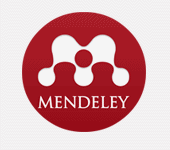Hubungan Kadar Hemoglobin dengan Prestasi Belajar Mahasiswa Program Studi Diploma III Kebidanan
Abstract
Full Text:
PDFReferences
Almatsier, S. (2010). Prinsip Dasar Ilmu Gizi. Jakarta: PT.Gramedia Pustaka Utama.
AiY., ZhaoSR., ZhouG., MaX., LiuJ. (2012). Hemoglobin status associate with performance IQ but not verbal IQ in Chinese pre-school children. Pediatri Int. 2012 October, 54(5)
Arisman. (2010). Gizi dalam daur kehidupan buku ajar ilmu gizi. EGC :Jakarta.
Barasi M. (2010). Ilmugizi. Jakarta: EGC
Kemenkes.(2013).Available:http://www.depkes.go.id/resources/download/general/Hasil%20Riskesdas%202013.pdf diakses tanggal 2 Januari 2019
Kosasi, dkk (2014). Hubungan Aktivitas Fisik terhadap Kadar Hemoglobin pada Mahasiswa Anggota U. Surakarta: Fak. Gizi Universitas Muhammadiyah Surakarta.
Pamularsih A. (2009). Hubungan status gizi dengan prestasi belajarsiswadi Sekolah Dasar Negeri2 Selo kecamatan Selo kabupaten Boyolali. Skripsi. Solo. Universitas Muhammadiyah Solo.
Puspitasari FD., Sudargo T. & Gamayanti IL. (2011). Hubungan antara status gizi dan factor sosio demografi dengan kemampuan kognitif anak sekolah dasar di daerah endemis GAKI. Gizi Indon, 34(1).
Syah, M. (2010). Psikologi Belajar. Jakarta: PT RajaGrafindo Persada.
Slameto, (2012). Belajar dan faktor-faktor yang mempengaruhi. Jakarta: RinekaCipta.
World Health Organization., (2010). Obesity and overweight, online (http://www.who.int/dietphysicalactivity/publications/facts/obesity/en/html Diakses 7 April 2019
DOI: http://dx.doi.org/10.30829/jumantik.v6i2.8042
Refbacks
- There are currently no refbacks.
Copyright (c) 2021 Hutari - Pujiastuti

This work is licensed under a Creative Commons Attribution-ShareAlike 4.0 International License.





